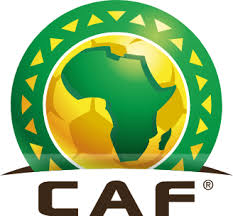
Why is Investment in African Football at an All-Time Low?
Share
Why is Investment in African Football at an All-Time Low?
Football, known globally as "the beautiful game," has deep roots and a vibrant presence across Africa. The continent boasts a rich football heritage with leagues that are over 50 years old, producing some of the world’s best players who have shone in top international leagues. Despite this, African football is currently experiencing a troubling decline in football output and investment, which is having a profound impact on its development and success on the global stage. This blog post explores the reasons behind the low investment in African football and discusses potential solutions to revitalize the sport across the continent.
The Decline of African Football
1. Poor Performances in International Tournaments
One of the most visible indicators of the decline in African football is the performance of its national teams in international tournaments. Historically, African teams have had moments of brilliance on the world stage, such as Cameroon’s quarter-final run in the 1990 World Cup, Nigeria’s impressive showings in the 1990s, and Ghana’s near semi-final berth in 2010. These performances were not only a source of immense pride but also showcased the potential of African football to a global audience. However, recent years have seen a marked decline. Many African nations are failing to qualify for major tournaments like the FIFA World Cup and Large nations having poor showings at the Africa Cup of Nations, and those that do often struggle to progress beyond the group stages. This underperformance reduces the visibility of African football and diminishes its appeal to investors and sponsors who are looking for teams that can compete and succeed at the highest levels. The poor performances can be attributed to various factors, including inadequate preparation, lack of infrastructure, and administrative issues within football federations.
2. Decreasing Presence of African Players in Top Leagues
African football was once known for producing a steady stream of talent that flowed into the top leagues around the world. Icons like George Weah, Didier Drogba, Samuel Eto'o, and Yaya Touré not only played in but dominated in some of the most prestigious leagues. These players were ambassadors for African football, demonstrating the skill and potential of players from the continent. However, there has been a noticeable decline in the number of African players making it to these top leagues in recent years. This trend can be attributed to a variety of factors, including inadequate scouting networks that fail to identify and nurture young talent, poor youth development programs that do not provide the necessary training and support, and lack of proper training facilities. Additionally, socio-economic challenges and political instability in some African countries can hinder the development of young players. The absence of African stars in top leagues diminishes the global profile of African football, making it less attractive to potential investors and reducing the opportunities for young African players to showcase their talents on the world stage.
3. Insufficient Investment from Key Stakeholders
Investment in African football from key stakeholders, including FIFA, local clubs, governments, and private businesses, is at an all-time low. This lack of investment manifests in poor infrastructure, inadequate training facilities, and insufficient financial support for clubs and leagues. Without the necessary resources, it is challenging to develop talent, maintain professional standards, and create competitive leagues that attract fans and sponsors. The absence of robust investment also impacts the quality of domestic leagues, which in turn affects the performance of national teams and the development of future stars. Corruption and mismanagement within football associations and federations have also deterred potential investors, who are wary of investing in a system that lacks transparency and accountability. Furthermore, the economic challenges faced by many African countries mean that governments and private sector entities often prioritize other areas over sports investment. This situation creates a vicious cycle where the lack of investment leads to poor performance, which in turn discourages further investment.
Addressing the Investment Crisis
Despite the current challenges, African football holds immense potential. To unlock this potential and attract the necessary investment, a clear and strategic approach is required. There are alot of things that need to happen but here are some key steps that can be taken:
1. Develop a Comprehensive Strategic Plan
A well-defined strategic plan is crucial for the revitalization of African football. This plan should focus on long-term development and outline clear objectives and actionable steps. It should include initiatives for improving infrastructure, developing youth academies, enhancing coaching standards, and ensuring the financial sustainability of clubs and leagues. Engaging stakeholders from all levels, including governments, private businesses, and international organizations, will be essential in crafting and implementing this strategy. A comprehensive plan should also address issues such as governance and accountability within football associations to build trust and confidence among investors. Furthermore, partnerships with successful football academies and clubs from around the world can provide valuable insights and resources for developing local talent.
2. Enhance Youth Development Programs
Youth development is the foundation of football success. Investing in grassroots programs and youth academies is vital for identifying and nurturing talent from a young age. Establishing partnerships with successful football academies and clubs from around the world can provide African youth with access to high-quality training and exposure to advanced football techniques. Additionally, creating local leagues and tournaments for young players will give them the competitive experience needed to succeed at higher levels. This approach requires not just financial investment but also a commitment to developing a comprehensive youth development curriculum that includes physical training, technical skills, and personal development. Collaborating with educational institutions can also ensure that young athletes receive a well-rounded education while pursuing their football careers. Moreover, involving former players and experienced coaches in these programs can provide mentorship and guidance to young talents.
3. Improve Scouting and Talent Identification
Effective scouting and talent identification are critical for ensuring that promising players are not overlooked. Developing robust scouting networks across the continent can help identify and recruit talented players who might otherwise go unnoticed. Utilizing modern technology and data analytics can also enhance scouting efforts, providing detailed insights into player performance and potential. Football associations can organize talent identification camps and tournaments to give scouts the opportunity to see young players in action. Additionally, building relationships with local clubs and community organizations can help in discovering talent at the grassroots level. Scouting should also be inclusive, ensuring that opportunities are available to players from all backgrounds and regions.
4. Secure Sustainable Financial Support
Securing sustainable financial support is crucial for the growth of African football. This involves attracting investments from various sources, including corporate sponsorships, government funding, and international grants. Clubs and leagues should also explore innovative revenue streams, such as merchandise sales, matchday revenues, and broadcasting rights. Ensuring financial transparency and accountability will be key to gaining the trust of investors and sponsors. Establishing partnerships with international clubs and businesses can also provide additional financial resources and expertise. Creating a favorable investment climate by addressing issues such as corruption and bureaucratic inefficiencies will be essential in attracting long-term investments. Furthermore, developing a comprehensive marketing strategy can enhance the commercial appeal of African football, making it more attractive to potential sponsors and investors.
5. Leverage Media and Technology
Increasing the visibility of African football is essential for attracting investment and growing the fan base. Establishing a proper TV deal or exploring digital streaming platforms can bring African football to a global audience. Partnerships with major broadcasters and streaming services can ensure that matches are accessible to fans worldwide. Additionally, leveraging social media and digital marketing can enhance fan engagement and build a strong online presence for African football. Creating compelling content, such as behind-the-scenes videos, player interviews, and match highlights, can attract viewers and build a loyal fan base. Developing mobile applications and websites can also provide fans with easy access to information and services related to African football. Furthermore, collaborating with international media outlets can help in promoting African football on a global scale.
Conclusion
The decline in investment in African football is a multifaceted issue that requires a comprehensive and strategic approach to address. By developing a clear plan, investing in youth development, improving scouting networks, securing sustainable financial support, and leveraging media and technology, African football can unlock its vast potential and reclaim its place on the global stage. The player pool and passion for the game are undoubtedly present; what is needed now is the commitment and investment from all stakeholders to create a thriving football ecosystem in Africa. With the right strategies and concerted efforts, African football can once again shine brightly and produce the next generation of football legends.
